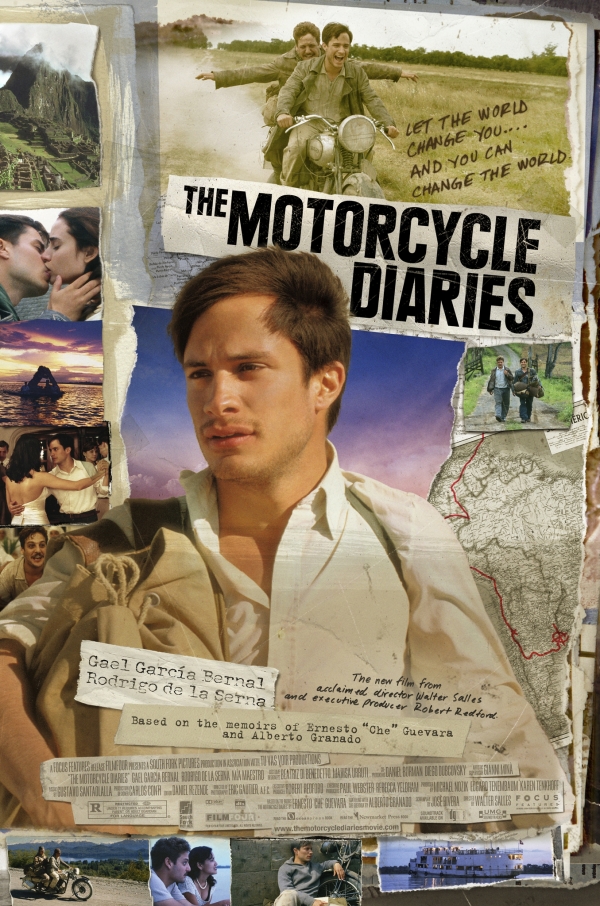
The Motorcycle Diaries (2004) is a biopic of the 1952 journey across South America by asthematic 23-year-old medical student, Ernesto Guevara (nickname “Fuser,” better known as Che Guevara), and his biochemist friend Alberto Granado. The film received over 30 nominations and awards, including the François Chalais Award at the Cannes Film Festival.
Summary
The two friends leave Buenos Aires, the bustling capital of Argentina, on their famous motorcycle La Poderosa, “The Mighty One”. Contrary to its name, the old comical motorcycle that leaks gas cannot even outrun the horse-riding gauchos (Argentinian cowhands).
The motorcycle eventually breaks down in Chile, forcing them to walk or hitch rides for the rest of the journey. The tone of the movie gets darker in the Atacama Desert, as they encounter an impoverished couple fleeing persecution for their Communist beliefs. Guevara rages against the treatment of workers at the Chuquicamata mines.
Moving to Peru, they meet native Indians of the conquered Inca Empire in Cuzco, which used to be the capital. The Indians now live in poverty because they were chased off their land. Gazing at Machu Picchu, Guevara wonders, “How is it possible to be nostalgic for a world you never knew?” Arriving in the San Pablo leper colony as a medical volunteer, Guevara forms a deep bond with the patients. At his farewell birthday party, Guevara makes his first political speech about the importance of a united Latin America, then swims across the river that divides the doctors and the patients in spite of asthma pain to bid farewell to the patients in person. They finally reach Venezuela eight months into their journey.
Opinion
The motorcycle journey is clearly not a simple holiday. It pushes human endurance to the limits, often with the two friends being penniless, tired, and living rough. As a coming-of-age film, it illustrates how the young Ernesto Guevara gradually matures by overcoming hardship.
The film is careful not to deal with the controversial political activism and legacy of Che Guevara’s later years, when he became a famous Marxist revolutionary. It mostly stays faithful to Che Guevara’s motorcycle diaries. What the film does focus on successfully is the social, racial, economic inequality in South America that motivated Che Guevara’s politics. Whereas famous investor Jim Rogers viewed the world with a Capitalist lens in his motorcycle journey, Guevara saw its side effect: inequality.
Che Guevara, who partook in the Cuban Revolution of 1959 and was killed by the CIA in Bolivia, became an icon of revolution for many on the left. The film portrays him as youthful, compassionate, humane, brave and honest, though some critics on the right argue that the film depicts an overly idealistic image of the controversial political figure.
The film highlights the positive role of travel in youth, which broadened Guevara’s perspective of the world and expanded the scope of his cultural imagination. The varied landscapes of the journey, from the beautifully clear blue Nahuel Huapi lake to the ruins of Machu Picchu, add charm to the film. Though a little slow-paced, the film is intriguing and often humorous; it teaches the viewer about Latin American cultures and encourages us to reflect on what we should do with our lives. Unfortunately, we cannot go traveling to South America during the pandemic, but this classic road film allows us to feel the transformative power of travel virtually.


